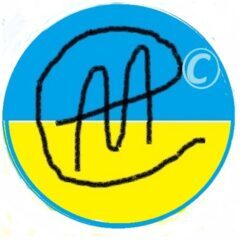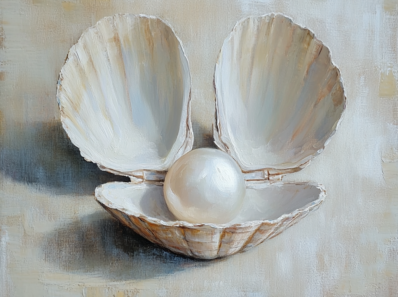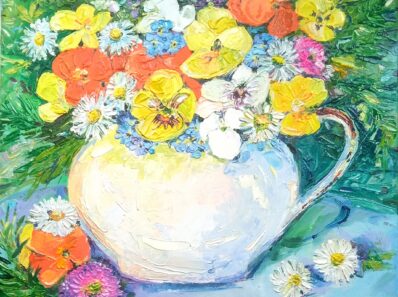🎨Ilya Repin (1844–1930): Reclaiming a Ukrainian Master
Birthplace: Chuguyev, Kharkiv Province, Ukraine
Notable Work: Barge Haulers on the Volga (1870–1873)
Ilya Repin was born in 1844 in Chuguyev, a town in the Kharkiv region of Ukraine, historically part of Sloboda Ukraine. Raised in a Cossack family, his early artistic endeavors included painting traditional Ukrainian Easter eggs (pysanky) and studying under a local icon painter.
Despite his deep Ukrainian roots, Repin’s identity has often been misrepresented. Notably, Finland’s largest art museum, Ateneum, corrected his nationality from Russian to Ukrainian, acknowledging his true heritage.
Repin’s masterpiece, Barge Haulers on the Volga,

is renowned for its realistic portrayal of laborers’ hardships, reflecting his empathy for the working class.
Advice for Contemporary Artists:
Repin believed in the importance of experiencing art firsthand. He once stated, “One must see the masterpieces of world art with one’s own eyes.”
🎨 Arkhip Kuindzhi (1841–1910): The Luminous Landscapes of Mariupol
Birthplace: Mariupol, Ukraine
Notable Work: Moonlit Night on the Dnieper (1880)
Arkhip Kuindzhi was born in 1841 in Mariupol, a city in southeastern Ukraine. Of Greek descent, he grew up in humble circumstances, often painting on walls and fences due to lack of materials. His deep connection to the Ukrainian landscape is evident in his luminous and atmospheric works, which revolutionized landscape painting in the Russian Empire.
Despite his Ukrainian roots, Kuindzhi is frequently labeled as a Russian artist. However, his upbringing and the subjects of his paintings firmly root him in Ukrainian culture. His masterpiece, Moonlit Night on the Dnieper, showcases the serene beauty of the Ukrainian river under moonlight, capturing the nation’s natural splendor.
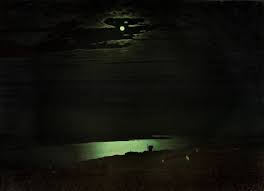
Advice for Contemporary Artists:
Kuindzhi believed in the power of observation and nature. He once said, “Art should be a reflection of the artist’s soul and the world around him.”
🎨Ivan Pokhitonov — A Master of Miniature Harmony
Ivan Pokhitonov was born on February 8, 1850, in the village of Motronivka, in what is now Kirovohrad Oblast, Ukraine. Despite lacking a formal academic art education, he became a recognized master of landscape painting, a member of the Peredvizhniki movement, and a full member of the Imperial Academy of Arts. Pokhitonov developed a unique technique: painting on small wooden panels using magnifying glasses and ultra-fine brushes, polishing the surface with fishbone to achieve a jewel-like finish that endures to this day.
Though he spent most of his life in France and Belgium, Pokhitonov’s soul remained deeply connected to his homeland. His intimate, atmospheric landscapes often feature gentle genre scenes that speak of a quiet admiration for nature and the peaceful rhythms of rural life. He frequently returned to Ukraine and created many of his finest works at his estate in Zhabovshchyzna.
Most Famous Work
Among his many masterful paintings, La Panne. The Beach (1895),
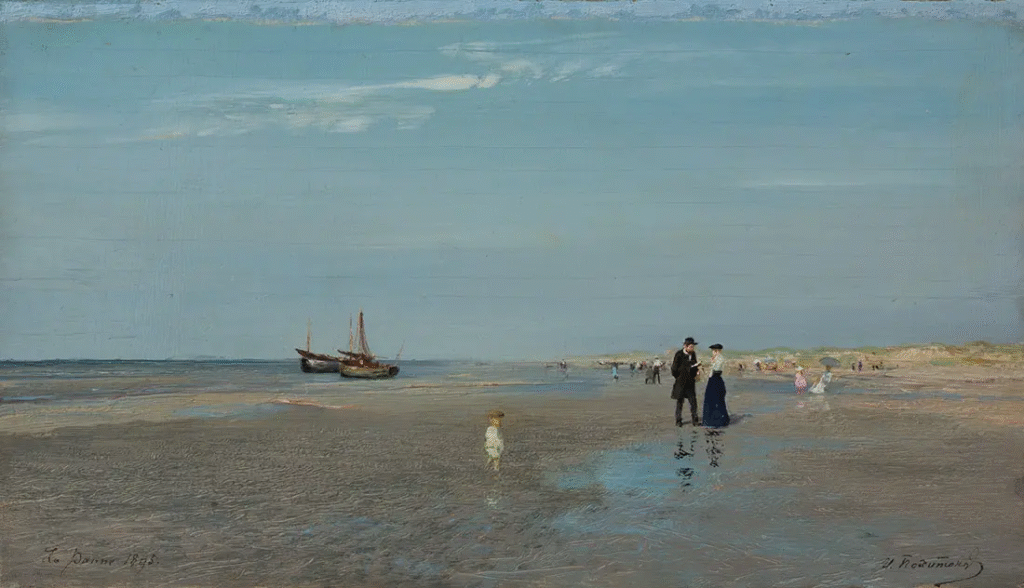
now held in the Tretyakov Gallery, stands out as a pinnacle of his craftsmanship. This small yet detailed seascape exemplifies his command of light, texture, and mood — all compressed into a jewel-like miniature that captivates the viewer with its serenity and precision.
- Message to the Present
“Dear fellow Ukrainians, let your hearts remain open to the quiet beauty of our native land. In every sunbeam, in every rustle of the leaves — the spirit of Ukraine lives on. Preserve this harmony in your souls and your creations, for in it lies our strength, our truth, and our identity.”
Ivan Pokhitonov is yet another brilliant Ukrainian artist whose legacy continues to be misattributed or erased. But the subtle power of his art and his lifelong bond with Ukraine make it unmistakably clear: he belongs to the rich cultural heritage of our nation — and to the future of its rightful recognition.
🎨 Kazimir Malevich (1879–1935): The Ukrainian Pioneer of Suprematism
Birthplace: Near Kyiv, Ukraine
Notable Work: Black Square (1915)
Kazimir Malevich was born in 1879 near Kyiv to a Polish family. He began his artistic education in Kyiv before moving to Moscow. Malevich is renowned for founding Suprematism, an abstract art movement focusing on basic geometric forms and pure artistic feeling.
While often associated with Russian avant-garde, Malevich’s Ukrainian origins played a significant role in his development. He acknowledged his Ukrainian heritage and incorporated elements of Ukrainian folk art into his works. His iconic Black Square marked a turning point in modern art, emphasizing the supremacy of pure artistic feeling over visual representation.

Advice for Contemporary Artists:
Malevich encouraged artists to break free from traditional forms, stating, “The artist can be a creator only when the forms in his picture have nothing in common with nature.”
🎨 Oleksandr Murashko (1875–1919): The Ukrainian Impressionist
Birthplace: Kyiv, Ukraine
Notable Work: Carousel (1906)
Oleksandr Murashko was born in Kyiv in 1875. He studied under his stepfather, a church painter, and later at the St. Petersburg Academy of Arts. Murashko became a prominent figure in Ukrainian Impressionism, blending European techniques with Ukrainian themes.
Murashko was instrumental in establishing the Ukrainian Academy of Arts and advocated for the development of a national Ukrainian art style. His works often depicted Ukrainian life, traditions, and landscapes, emphasizing the country’s rich cultural heritage.

Advice for Contemporary Artists:
Murashko believed in the fusion of national identity with artistic expression, urging artists to “draw inspiration from their native land and its people.”
🎨 Mykhailo Boichuk (1882–1937): The Founder of Ukrainian Monumentalism
Birthplace: Romanivka, Ternopil Oblast, Ukraine
Notable Work: Frescoes in Kyiv Cooperative Institute (1920s)
Mykhailo Boichuk was a pioneer of monumental art in Ukraine, blending Byzantine traditions with modernist techniques. He studied in Paris and later returned to Kyiv, where he founded a school of monumental painting known as “Boichukism.”
Boichuk’s works emphasized social themes and Ukrainian identity. Unfortunately, during Stalin’s purges, he was executed, and many of his works were destroyed. Despite this, his influence persists in Ukrainian art history.
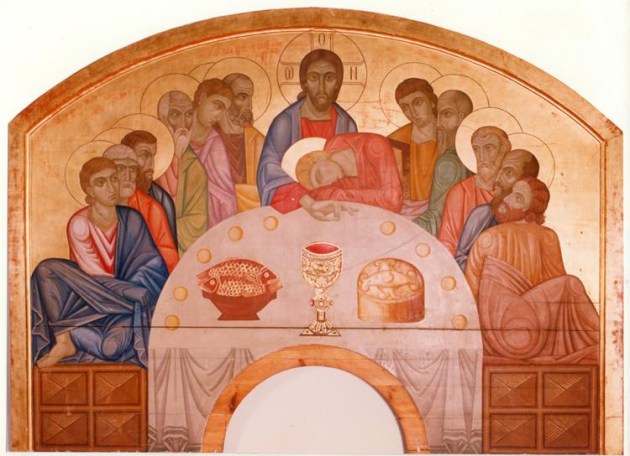
Advice for Contemporary Artists:
Boichuk championed art that served the people, stating, “Art must be accessible and resonate with the masses.”
🎨 Vasyl Krychevsky (1873–1952): Architect of Ukrainian Visual Identity
Birthplace: Vorozhba, Sumy Oblast, Ukraine
Notable Work: Design of the Ukrainian People’s Republic’s Coat of Arms
Vasyl Krychevsky was a multifaceted artist: architect, painter, graphic designer, and art scholar. He played a crucial role in shaping Ukraine’s national identity through art, designing the coat of arms, banknotes, and stamps of the Ukrainian People’s Republic.
Krychevsky also contributed to the development of Ukrainian architecture, blending traditional styles with modernist elements. His works are a testament to his dedication to Ukrainian culture and heritage.

Advice for Contemporary Artists:
Krychevsky emphasized the importance of cultural roots, advising artists to “build upon the foundations of national traditions.”
🎨 David Burliuk (1882–1967): The Father of Futurism with Ukrainian Roots
Birthplace: Riabushky, Sumy Oblast, Ukraine
Notable Work: The End of the World (1912)
David Burliuk was born in 1882 in Riabushky, Ukraine. He studied in various art schools across Europe and became a leading figure in the Futurist movement.
Though often associated with Russian Futurism, Burliuk’s Ukrainian heritage deeply influenced his art and poetry. He celebrated Ukrainian folklore and landscapes in his works, bridging avant-garde techniques with national themes.

Painting “Rural Landscape” (1930), which was stolen by russian troops from the Kherson Museum
Advice for Contemporary Artists:
Burliuk encouraged experimentation, stating, “Be bold, be daring, and let your art reflect the dynamism of life.”
🎨 Sonia Delaunay (1885–1979): The Ukrainian-Born Innovator of Simultaneism
Birthplace: Hradyzk, Poltava Oblast, Ukraine
Notable Work: Prismes électriques (1914)
Sonia Delaunay, born Sarah Ilinitchna Stern, hailed from Hradyzk, Ukraine. She moved to Paris, where she became a central figure in the avant-garde movement, co-founding Orphism and pioneering Simultaneism in art and design.
Delaunay’s Ukrainian upbringing influenced her vibrant use of color and pattern, reminiscent of Ukrainian folk art. Her works spanned painting, textiles, and fashion, breaking boundaries between fine and applied arts.

Advice for Contemporary Artists:
Delaunay believed in the unity of art and life, asserting, “Color is the skin of the world; let it envelop your creations.”
🎨 Marie Bashkirtseff (1858–1884): The Ukrainian Voice in Parisian Art
Birthplace: Gavrontsi, Poltava Oblast, Ukraine
Notable Work: Self-Portrait with Palette (1880)
Marie Bashkirtseff was born into a noble Ukrainian family in 1858. She moved to Paris, where she studied at the Académie Julian and became known for her paintings and detailed diaries.
Despite her short life, Bashkirtseff made significant contributions to art and literature. Her works often depicted women and societal issues, reflecting her proto-feminist views. Her Ukrainian heritage remained a vital part of her identity.

Advice for Contemporary Artists:
Bashkirtseff championed authenticity, writing, “Paint what you feel, not what you see.”
🎨 Alexander Archipenko (1887–1964): The Ukrainian Sculptor Who Revolutionized Form
Birthplace: Kyiv, Ukraine
Notable Work: Woman Walking (1912)
Alexander Archipenko was born in Kyiv in 1887. He studied at the Kyiv Art School before moving to Paris, where he became a pioneer in modern sculpture, integrating Cubist principles into three-dimensional art.
Archipenko’s innovations included the use of negative space and mixed media, challenging traditional sculptural norms. His Ukrainian background influenced his artistic perspective, blending Eastern European motifs with avant-garde techniques.
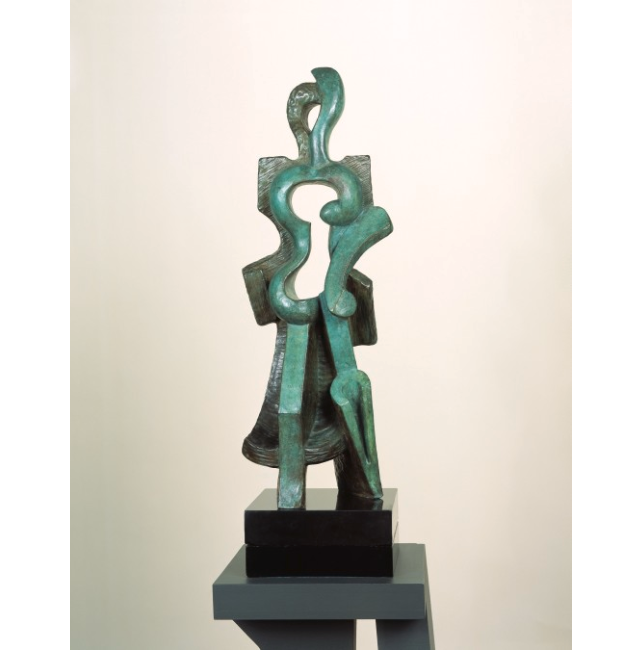
Advice for Contemporary Artists:
Archipenko emphasized innovation, stating, “Sculpture must evolve, embracing new forms and ideas.”
🎨 Ivan Marchuk (Born 1936): The Living Legend of Ukrainian Art
Birthplace: Moskalivka, Ternopil Oblast, Ukraine
Notable Work: Voice of My Soul Series
Ivan Marchuk, born in 1936, is a contemporary Ukrainian artist renowned for his unique technique called “Pliontanism,” characterized by intricate interwoven lines.
Marchuk’s works delve into philosophical themes, reflecting Ukraine’s history and his personal experiences. Despite facing persecution during Soviet times, he continued to create, earning international acclaim.
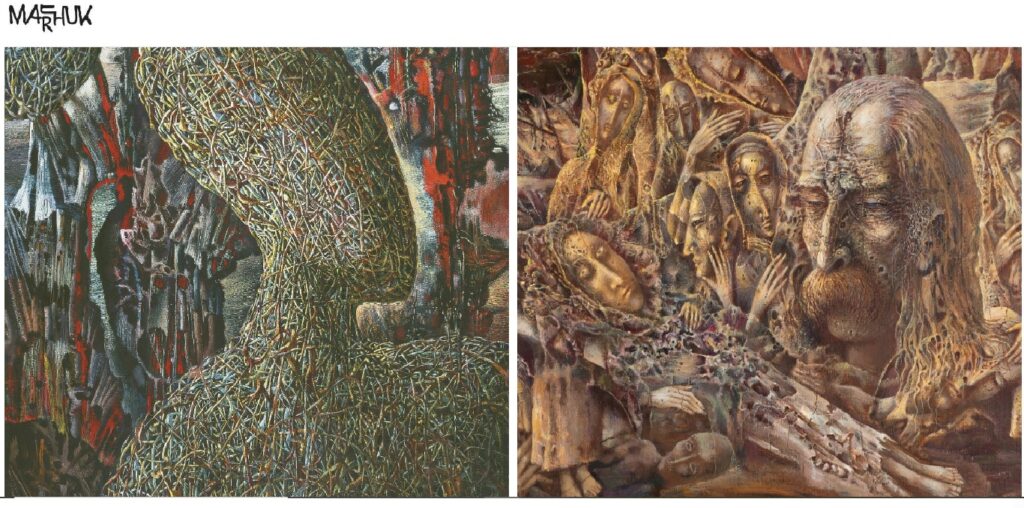
Advice for Contemporary Artists:
Marchuk advocates for perseverance, advising, “Let your art be the echo of your soul’s resilience.”
🎨 Heorhiy Narbut (1886–1920): The Architect of Ukrainian Graphic Design
Birthplace: Narbutivka, Chernihiv Oblast, Ukraine
Notable Work: Design of Ukrainian People’s Republic’s Banknotes and Stamps
Heorhiy Narbut was born in 1886 in Narbutivka, Ukraine. He became a seminal figure in Ukrainian graphic design, creating the national coat of arms, banknotes, and stamps for the Ukrainian People’s Republic.
Narbut’s works combined traditional Ukrainian motifs with modernist aesthetics, laying the foundation for Ukraine’s visual identity in the 20th century.

Advice for Contemporary Artists:
Narbut believed in the power of national symbols, stating, “Art is the mirror of a nation’s soul.”

Winged Horse by Ukrainian artist Maria Prymachenko (1908-1997)
When a cruel, degraded empire with no true culture of its own arrives, it doesn’t just destroy bridges and churches — it steals memory. It takes what is beautiful and unique and claims it as its own. But we know the truth.
Our art, our language, our songs, our traditions — these are not just heritage. They are acts of resistance. And no one can take them from us unless we give them away ourselves.
So let’s speak. Let’s paint. Let’s write. Let’s remember. And let’s stand for what’s ours.
Because when a foreign power tries to erase your name, it begins by taking what defines you — your culture, your voice, your art. But every brushstroke, every Ukrainian word, every memory of who we are — is resistance.
And at the same time — it is hope.
Our identity lives as long as we carry it.
